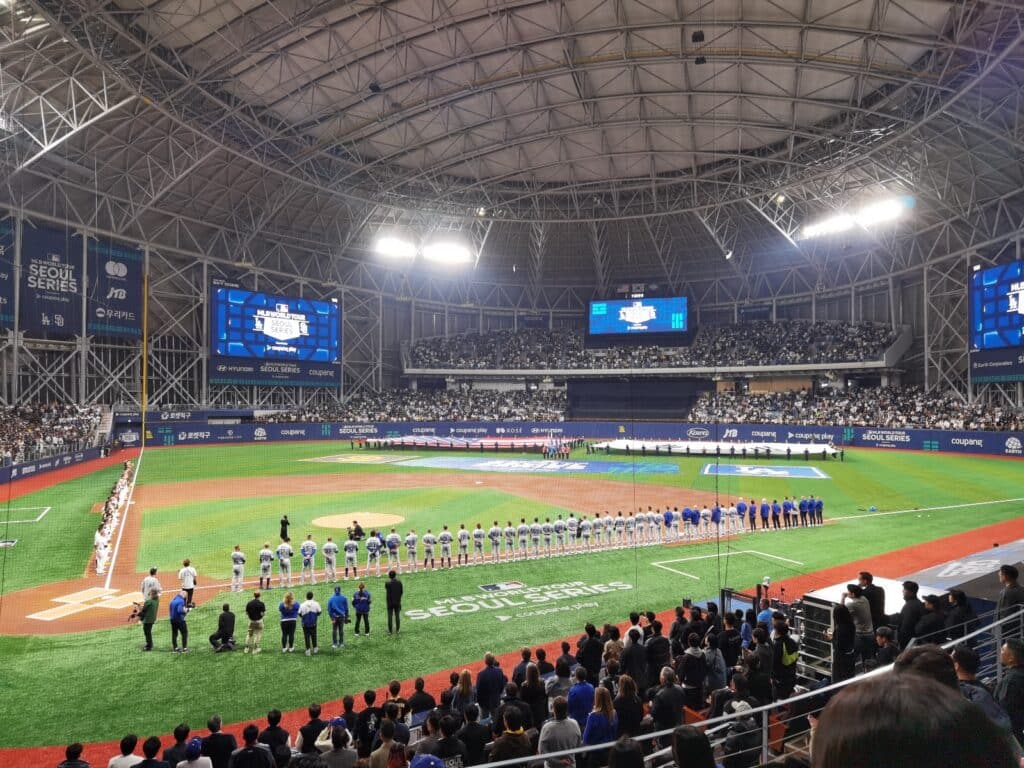
In March, Korean baseball fans witnessed a historic moment as the Major League Baseball representatives, the Los Angeles Dodgers and the San Diego Padres, battled it out in the Seoul Series, consisting of a total of six games. Among these, two games were regular-season MLB matchups between the Dodgers and Padres, while the remaining four games saw intense competition between the MLB squads and the Korean national team and KBO (Korean Baseball Organization) teams.
Exhibition Game Results (Korean Standard Time: GMT+9)
- March 17th 12:00 LAD 14 : 3 Kiwoom Heroes
- March 17th 19:00 Korea 0 : 1 SD
- March 18th 12:00 SD 5 : 4 LG Twins
- March 18th 19:00 Korea 2 : 5 LAD
Official MLB Game Results
- *March 20th 19:00 LAD 5 : 2 SD
- March 21st 19:00 LAD 15 : 11 SD
(*Official MLB Opening Day)

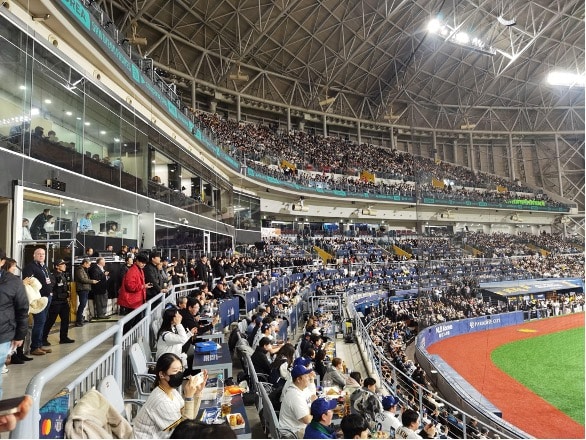
After the exhibition games, KBO players such as Hye-sung Kim from Kiwoom and Taek-yeon Kim from Doosan showcased impressive performances, earning praise and raising the level of Korean baseball. It’s worth noting that the Korean national team mainly consisted of promising young players, including an 18-year-old, sparking discussions.
The ceremonial first pitch was thrown by Chan-ho Park, who made headlines during the press conference. Chan-ho Park, the first Korean to play in the major leagues, debuted with the Dodgers 30 years ago (April 8, 1994) and later played for the Padres. His outstanding performance during Korea’s International Monetary Fund (IMF) financial crisis gave people hope.
Reflecting on the moment before the ceremonial pitch, Park stated, “When I look at all these Asian players today, I feel that the tree planted by Hideo Nomo has grown strong and the tree planted by Chan-Ho Park has grown strong, and that the fruits of those trees are now leading the majors and inspiring new hope.”
Wearing a half-and-half jersey representing both teams, Chan-ho Park threw the ball to Ha-sung Kim, currently a shortstop for the Korean team.
During the Seoul Series, both Dave Roberts, the manager of the LA Dodgers, and Mike Shildt, the manager of the San Diego Padres, along with some players, expressed gratitude for the passionate support from Korea, regardless of the game outcomes. Particularly, they noted how the Korean cheering style constantly boosted the players’ morale throughout the matches.
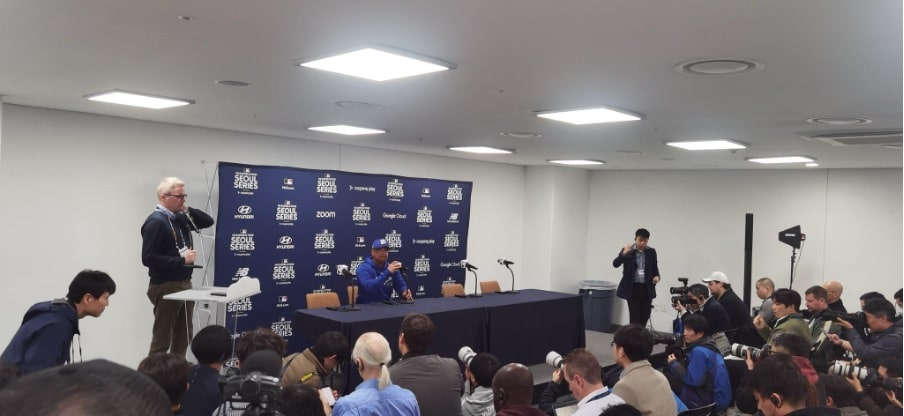
“The environment, the atmosphere was great. A lot of energy tonight certainly on their side. We’re not used to having cheerleaders during games so that was exciting for everyone and it just seemed like everyone kept their energy up throughout the whole night.”
Dodgers Manager, Dave Roberts
“It was good vibes and high energy. I think there’s some stuff we can learn from that”
Padres Manager, Mike Shildt
“In between innings, or while the inning is going on, the songs and the sounds and stuff … it’s really cool.”
Dodger Pitcher, Tyler Glasnow

In an interview with JapanBall, an American LA Dodgers fan who traveled to Korea to watch the opening game of the Seoul Series had this to say:
It’s amazing… the cheerleaders, and the Ohtani song, the walk-up songs. It’s Amazing! So Amazing. We love it!
American Dodgers Fan

Among the San Diego Padres’ travel roster of 31 players, 16 were born outside of the United States. Given its proximity to Mexico, there was a high representation of Latin American players, and the presence of Korean and Japanese players filled the stadium with K-pop and J-pop. This cultural diversity added to the vibrant atmosphere of the games.
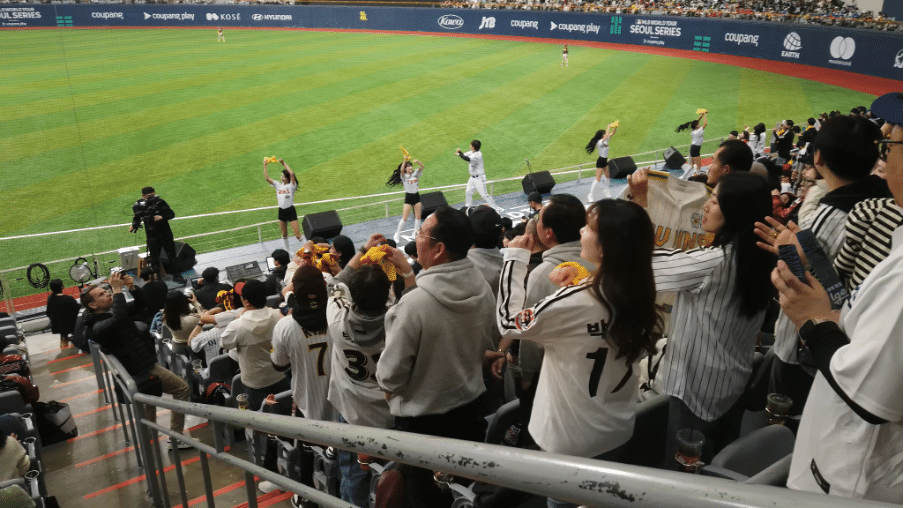
One notable observation from this Seoul Series was the increased number of pitch clock violations by the San Diego Padres compared to usual. While the Padres had 30 pitch clock violations out of 162 games last year, they had 4 violations just in the first game of this series. While not confirmed, there’s a possibility that they were influenced by the Korean cheering culture. (According to personal research, there’s more than a 1-second difference in pitch intervals between games with and without Korean cheering culture)
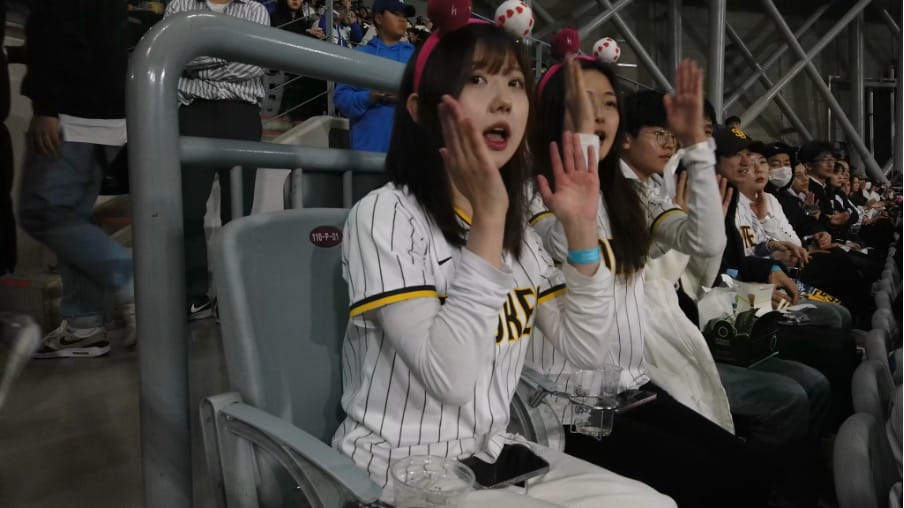
We can feel this fiercely spirited baseball support culture in Korea. And in recent years, the KBO has seen an increase in female spectators and younger fans. Some of this rise in spectators may be due to changes at the games, where long pitching intervals are used as opportunities to create entertaining moments.
Apart from the Seoul Series games, players and their families enjoyed exploring local culture by visiting famous tourist spots like Gwanghwamun Square and Gyeongbokgung Palace or indulging in street food at Gwangjang Market. Some players praised Seoul’s subway system for its convenience and speed, while others even experienced K-beauty by doing face masks in the evening.
